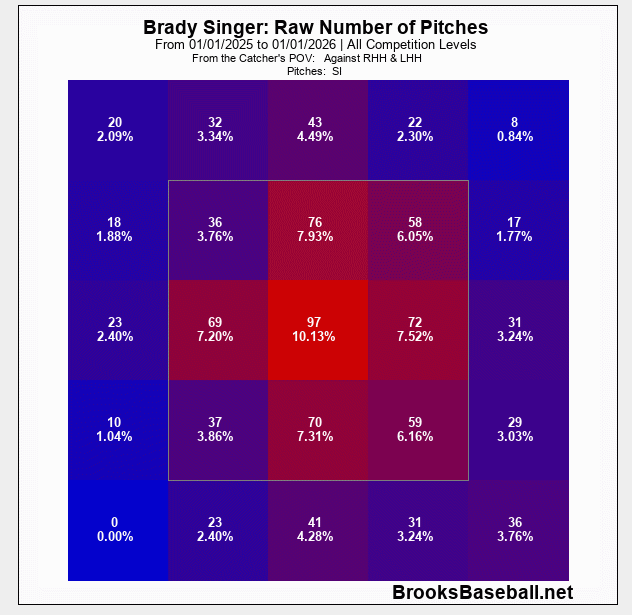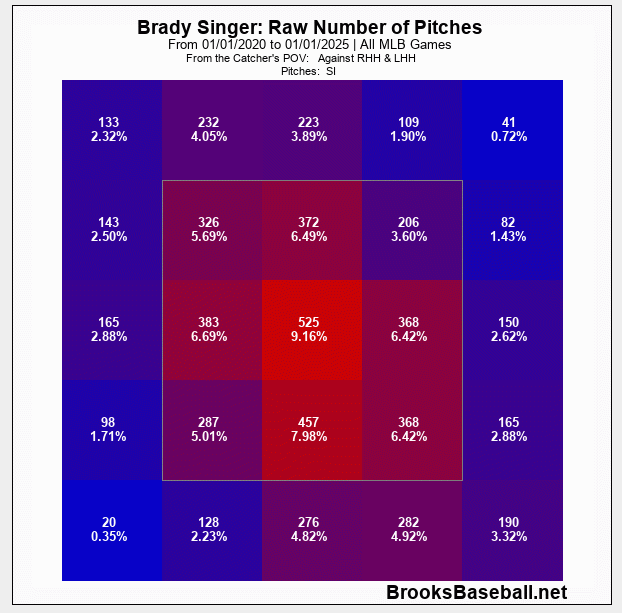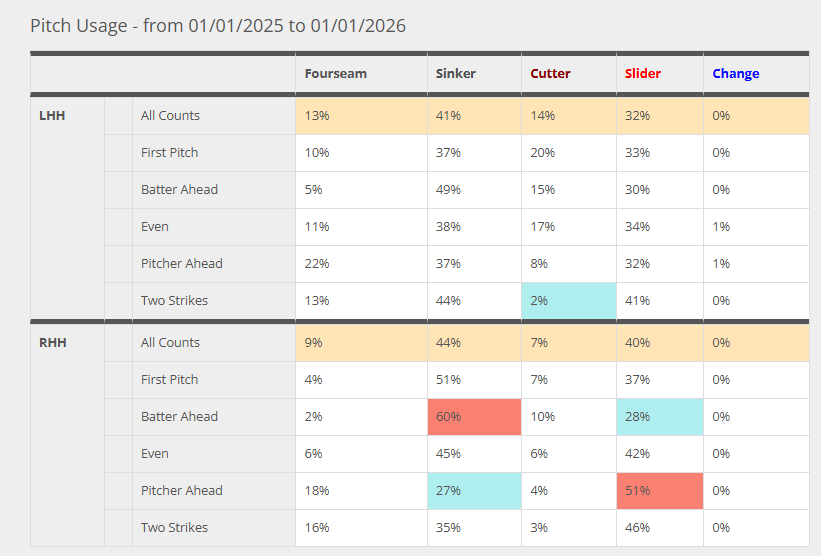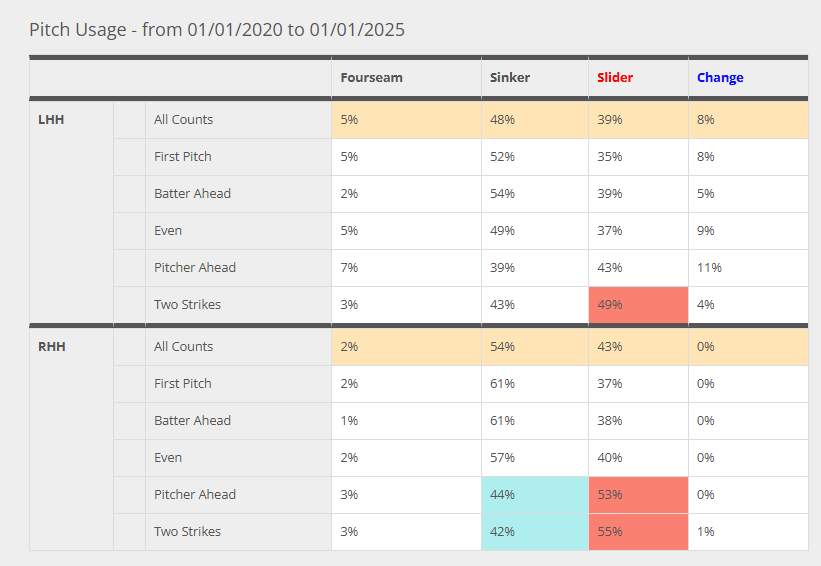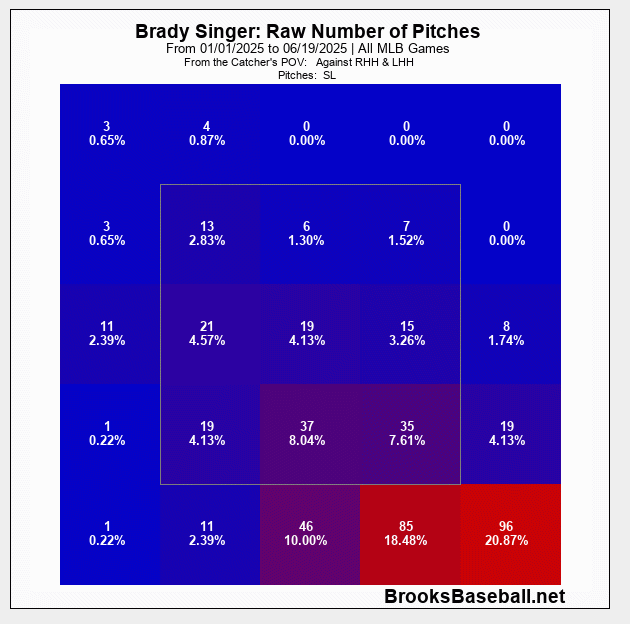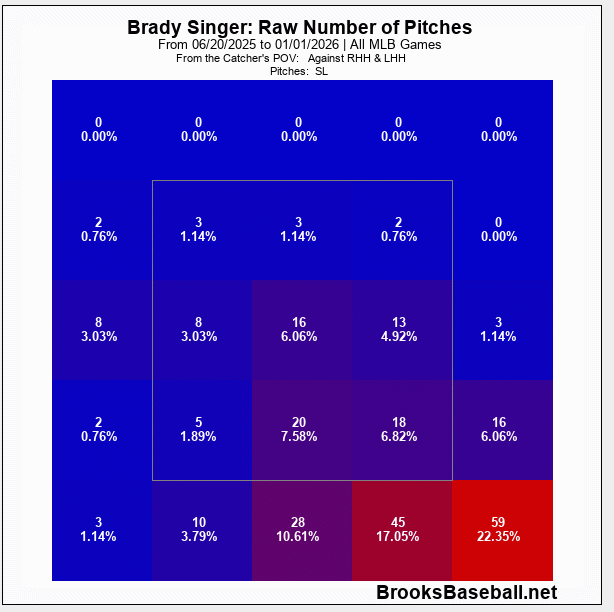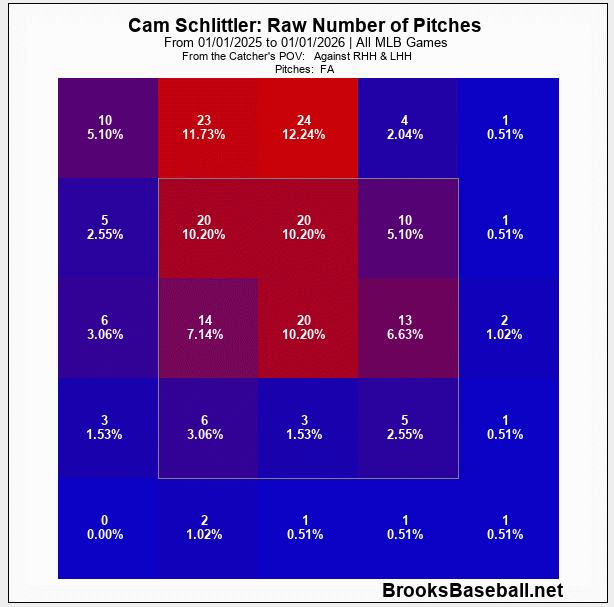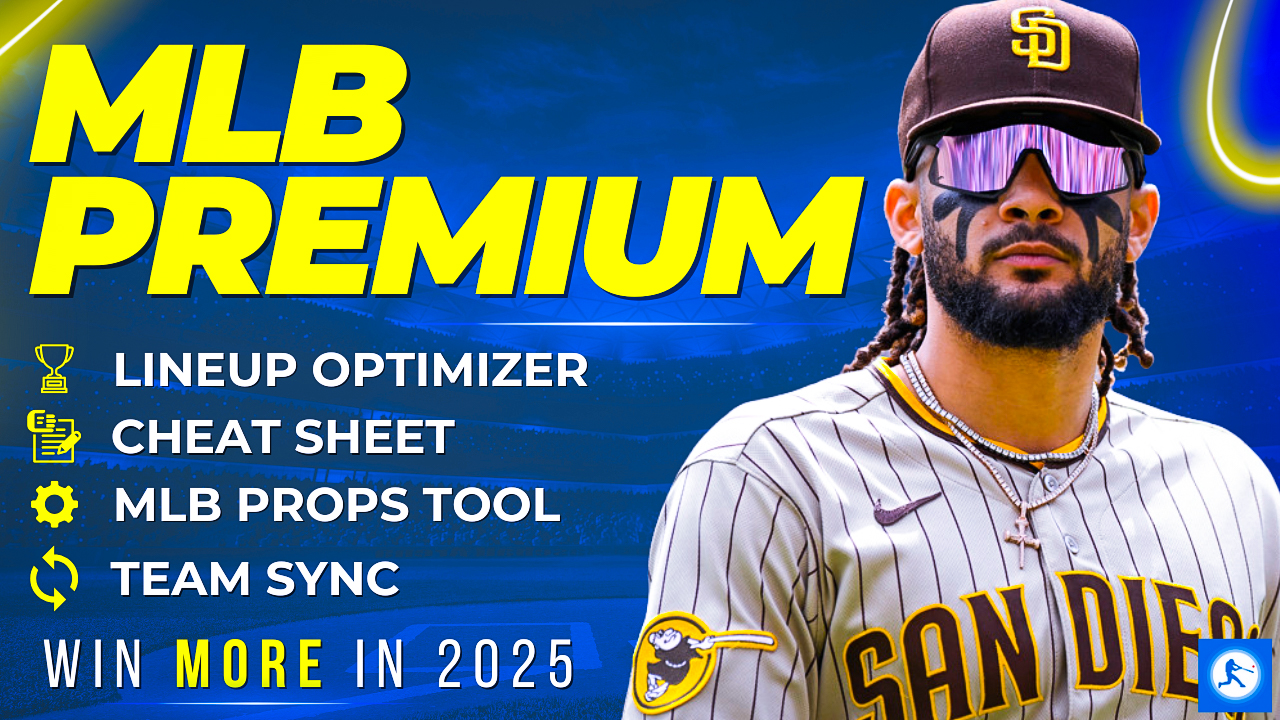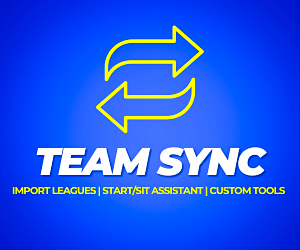Elliott looks at pitchers with surprising starts recently. These SPs could emerge as fantasy baseball waiver wire targets for Week 19 in 2025, or just mirages.
Welcome back to the "Are You For Real?" series as we dive into Week 19 of the 2025 fantasy baseball season. For those unfamiliar, this is a weekly column where we examine starting pitchers who had surprisingly strong starts over the past week and put them under the microscope to determine whether they're legitimate or just smoke and mirrors.
The trade deadline has come and gone, and now that the dust has settled, it's time to gear up for the stretch run in fantasy baseball! This week, we've got three intriguing arms to break down. First, we'll look at Brady Singer's 10-strikeout day on Friday. Then, we'll deep dive into Joe Boyle's shutout performance against the Dodgers. We'll finish off with one of the lone bright spots for the Yankees over the weekend, right-hander Cam Schlittler's strong start on Saturday.
Roster percentages are taken from Yahoo! and are accurate as of August 4.
Be sure to check all of our fantasy baseball lineup tools and resources:- Fantasy baseball trade analyzer
- BvP matchups data (Batter vs. Pitcher)
- PvB matchups data (Pitcher vs. Batter)
- Who should I start? Fantasy baseball comparisons
- Daily MLB starting lineups
- Fantasy baseball closer depth charts
- Fantasy Baseball live scoreboard
- Fantasy baseball injury reports
Brady Singer, Cincinnati Reds – 46% Rostered
2025 Stats (prior to this start): 109.2 IP, 4.60 ERA, 4.20 FIP, 12.3% K-BB%
08/01 vs. ATL: 6 IP, 4 H, 0 ER, 1 BB, 10 K
Singer is coming off one of his best starts all season on Friday, fanning 10 Braves while picking up his second straight victory. It was the second straight dominant outing for Singer, who allowed just one run and struck out eight over seven innings against Tampa Bay in his previous start. It’s been an up-and-down year for Singer, who has a 3.20 FIP and 11.2 K/9 over his last eight starts, but a 4.39 ERA to go along with it. Can Singer provide value for us down the stretch, or is he someone to ignore?
Originally a first-round pick by Kansas City back in 2018, Singer was a pretty big prospect coming up through the Royals’ system, though less so on a national level. His 6’5” frame, strong slider, and solid command had scouts thinking Singer could make it as a mid-rotation arm. Singer works with a five-pitch mix consisting of a sinker, slider, four-seamer, cutter, and sweeper.
Singer may have five pitches at his disposal, but he is known for two of them, and that would be the sinker and the slider. Although his combined usage has fallen slightly over the years, he still throws either the sinker or slider a combined 71.9% of the time. Let’s start with the sinker, as it was Singer’s most-used pitch against Atlanta and has been his most-used pitch as a major leaguer. A 92.2 mph offering, Singer’s sinker has below-average drop and average horizontal movement, giving it a typical shape.
Normally, Singer’s sinker has been excellent at generating groundballs, but that hasn’t been the case in 2025. Singer has a 13-degree average launch angle against with this pitch, along with just a 28.1% ground-ball rate. For context, he has a career 47.8% ground-ball rate with his sinker and had a 4-degree average launch angle against last year. What changed? Let’s have a look at Singer’s sinker heatmaps from this season and for the rest of his career.
2025:
Pre-2025:
Not too much change there, and while Singer’s sinker zone rate is up to 64.6% this season (career 61.8%), it’s hard to say that this is the reason for his lack of groundballs. Let’s have a look at his pitch sequencing from this season compared to his career.
2025:
pre-2025:
What stands out with the sinker is his reduction in usage when in even counts, when ahead in counts, as the first pitch, and with two strikes. It seems as though Singer is taking a new approach where he no longer relies on the sinker as the out pitch, and thus is less reliant on groundballs.
Against lefties, it seems that his cutter is supplementing previous sinker usage. This doesn’t necessarily explain the lack of groundballs, but it does show us a new approach that Singer is taking, and perhaps this cutter is the elusive complement to his sinker-slider combo that he’s been chasing for his major league career.
Singer has only thrown the cutter 10.5% of the time this season, but he’s thrown it more frequently to left-handed hitters. An 87.6 mph offering, the cutter sort of lands in between the sinker and slider for Singer. It’s harder than the slider, but not as hard as the sinker. It doesn’t move as much as the slider and doesn’t generate the same number of whiffs. Batters have had no problem with Singer’s cutter this season, hitting .293 with a .439 SLG and .357 wOBA.
The expected stats are even worse, with a .347 xBA, .551 xSLG, and .417 xwOBA against. Singer got three whiffs on four swings in this start against Atlanta, but the Braves were swinging at everything on Friday. Singer piled up a whopping 21 whiffs in this start. It’s nice to see Singer with a pitch that will make him less reliant on the sinker-slider combo, but this cutter seems like nothing more than a change of pace or show-me pitch.
Singer’s most used pitch is the sinker, and his new pitch is the cutter, but his most famous pitch has to be the slider. An 82.5 mph offering, Singer’s slider has plus spin and plus vertical movement, giving it that classic slider sweeping motion. Opponents have really struggled against Singer’s slider this season, hitting just .209 with a .346 SLG and a .261 wOBA off the pitch. The expected stats aren’t much better for batters either, with a .235 xBA, .374 xSLG, and .283 xwOBA against the slider.
Singer racked up a whopping 10 of 21 whiffs with his slider in this start, and he’s been earning more swinging strikes with his slider during his most recent hot stretch. Prior to June 20, Singer had a 12.83% swinging strike rate with his slider, but in the eight starts since June 20, he has an impressive 20.08% swinging strike rate with the pitch. That’s quite a jump, but is Singer doing anything differently? Let’s have a look at his slider heatmaps prior to June 20 and after June 20.
Opening Day-6.19
6.20-Now
Not a big difference in pitch location, which isn’t abnormal, as Singer is already hitting the right spots with his slider. The slider usage didn’t change drastically over this period, nor did the movement. There really isn’t anything I can point to and explain Singer’s bump in strikeouts over this time period. It’s only eight starts of 146 made by Singer over the course of his career, so perhaps it's just performance fluctuations. He’s flashed this type of upside before in his Royals days, never for it to stick. I do think Singer is a more attractive streaming option now than he was two months ago, because he has shown us some strikeout upside this season.
Verdict:
Singer has seen a spike in strikeouts recently thanks to some in-season improvements in slider effectiveness. That’s exactly what we want to see from Singer, as the slider is his best pitch and his path to success on the mound. Unfortunately, there doesn't seem to be any big change made by Singer that’s causing this, and it seems like his strikeout gains could just be performance fluctuations. He isn’t throwing the slider harder, or in different ways, or in different spots, so why would his swinging strike rate improve by 8% and his strikeout rate jump up to 11.2 K/9 over his last eight starts?
An 11.2 K/9 with a 4.39 ERA and 3.20 FIP is on the normal end of performance variance for a pitcher like Singer; I don’t think he’s made any significant changes to suggest that he’s turned a corner or become a new pitcher. The cutter could be a nice addition, but it’s been hit hard thus far and has not performed well. Singer is certainly streamable in his current form, but he’s not much more than a matchups-based streamer. His next start is scheduled for Thursday at Pittsburgh, and I certainly think you could use Singer there.
Joe Boyle, Tampa Bay Rays – 23% Rostered
2025 Stats (prior to this start): 22.1 IP, 2.82 ERA, 3.46 FIP, 17% K-BB%
08/03 vs. LAD: 5 IP, 3 H, 0 ER, 2 BB, 2 K
Boyle bounced back nicely after allowing six runs (four earned) in his previous outing against the Yankees. He blanked the Dodgers for five scoreless innings in one of his best appearances all season. Boyle had some hype behind his name after an offseason trade brought him to Tampa from the Athletics, and he began dominating in Triple-A for Tampa Bay. Is Boyle someone we can trust, or should we keep him on waivers?
Originally a fifth-round pick by the Reds back in 2020, Boyle was traded from Cincinnati to Oakland, and then Oakland/Sacramento/Vegas to Tampa Bay. As a prospect, Boyle was known for being extreme. He has extreme velocity, extreme size (6’8” 250 lbs), and extreme control issues. Many questioned whether Boyle could hack it as an MLB starter due to his control issues, and the critics looked correct following a 2024 where Boyle had an outrageous 7.55 BB/9 in 47.2 innings. 7.55 BB/9 is so nuts, it’s higher than certain pitchers’ K/9 rate. Boyle works with a three-pitch mix consisting of a four-seam fastball, slider, and splitter.
Boyle’s most-used pitch has been the four-seam fastball, which he throws 53.2% of the time. A 98.4 mph offering, Boyle can bring some serious heat with his fastball, even touching 100 mph at times. Boyle has average movement with the pitch, but does have above-average spin at 2566 RPM. Batters have really struggled against this pitch, hitting just .149 with a .255 SLG and a .240 wOBA. The expected stats suggest that regression could be coming with a .222 xBA, .416 xSLG, and .324 xwOBA against.
It’s still a pretty small sample size for Boyle, so we can’t put too much stock into these numbers, but one thing Boyle has done well so far is induce flyballs with his fastball. He has a 27-degree average launch angle against with this pitch, along with a 57.5% fly-ball rate and a 34.8% infield fly-ball rate. Flyballs are the least likely batted ball type to land for a hit, and Boyle has never had home run issues at any level, so this approach could prove fruitful for him.
If he’s able to induce flyballs alongside generating whiffs with his heat, then his fastball could perform quite well. He currently has a 23.1% whiff rate with the pitch, which is excellent for a fastball. He only got three whiffs total in this start against the Dodgers, but with a 32.9% strikeout rate at Triple-A this season, I think it’s reasonable to expect more strikeouts from Boyle going forward.
Another reason I think we can expect more strikeouts from Boyle is his slider. A 91.1 mph offering, Boyle again has plus spin with the pitch and has a 41.1% whiff rate with it this season. Here’s an example from earlier this season.
— Elliott Baas (@ElliottBaasBB) August 4, 2025
It looks almost cartoonish there, and Boyle can touch 93 mph with this slider at its hardest. Opponents have really struggled against this pitch as well, hitting just .171 with a .314 SLG and a .268 wOBA. The expected stats are even better with a .153 xBA, .225 xSLG, and .231 xwOBA. Between its velocity and movement, this slider has all the makings of a strikeout weapon, and Boyle should be a plus strikeout pitcher in the majors.
We may not see the crazy strikeout rates that Boyle managed to put up at Triple-A, but he has the stuff to strike out major league hitters. This start against the Dodgers was a little wonky in that Boyle secured just three swinging strikes on 71 pitches, but the stuff and underlying numbers and minor league numbers all suggest that Boyle is capable of more.
Boyle is most known for his fastball and slider, throwing them a combined 84.9% of the time. But he does have a solid third pitch as well, and that would be his splitter. A 93.2 mph offering, Boyle’s splitter has extreme horizontal break and a low 1977 RPM spin rate. The splitter is more of a “splinker”, a splitter-sinker hybrid that does an excellent job at generating groundballs.
Overall, batters have yet to get a hit off Boyle’s splitter with a cool .000 AVG against, along with a -7-degree average launch angle and a 71.4% groundball rate. This is still a very small sample size for Boyle, but this is exactly what I’d want to see out of a pitch like this. Boyle even has an impressive 37.5% whiff rate with this pitch so far. The splitter could be the perfect complementary offering to use against lefties or just as a surprise strikeout pitch against righties.
The stuff looks fantastic for Boyle, and he’s performed well to this point. The biggest question mark with him remains the same: control. Boyle has a good (for him) walk rate of 3.62 BB/9 this season, which is a vast improvement on his 7.55 BB/9 last season.
Even in the minors, he’s gotten better. Boyle has a 3.82 BB/9 at Triple-A this season and had a 7.69 BB/9 at Triple-A last season. One encouraging sign is that Boyle’s zone rate is up to 53.2% this season, a 5% improvement from last year. Boyle’s stuff is so nasty that if he can just get it over the plate and set himself up into good counts, he could really start mowing lineups down. It’s too enticing to ignore in fantasy leagues.
Verdict:
There is no denying how good Boyle’s stuff is. Averaging 98 mph with his heater and 91 with his slider, Boyle can challenge hitters and should be able to produce an above-average strikeout rate in the major leagues. His four-seamer, slider, and splitter are all plus pitches that Boyle can wield to find success on the mound. He’s put up plus strikeout rates at all levels thus far, and I think he’s capable of a plus strikeout rate despite only notching two Ks on three whiffs in this one.
The concern for Boyle remains control, as he has struggled mightily with walks throughout his professional career. He has cut the walks down to a manageable 10.2% this season. I think we can live with a walk rate around this mark, but any higher and things start to get dicey. Boyle should have a spot in the rotation for now, and I think that makes him worth an add in standard leagues. The talent is just too good, control issues be damned.
Cam Schlittler, New York Yankees – 16% Rostered
2025 Stats (prior to this start): 14.2 IP, 4.91 ERA, 5.56 FIP, 8.8% K-BB%
08/02 @ MIA: 5 IP, 4 H, 2 ER, 2 BB, 6 K
Schlittler had his best start as a big leaguer on Saturday, holding Miami to just two runs over five innings in the tough luck loss. One of New York’s biggest pitching prospects, Schlittler has been a mixed bag since being promoted to the big leagues, and hasn’t been reliable enough to trust in fantasy. Was Saturday the start of Schlittler stabilizing himself?
Originally a seventh-round pick by the Yankees back in 2022, Schlittler rose up the prospect rankings thanks to a strong showing in 2024, where Schlittler put up a 3.36 ERA and 19.1% K-BB% in 120.2 innings across all levels. He has put up some prodigious strikeout numbers in the minor leagues, including a 29.8% strikeout rate in 2024 and a 31.9% strikeout rate in 2025 at the minor league level. Schlittler works with a five-pitch mix consisting of a four-seam fastball, slider, curveball, sweeper, and sinker.
Schlittler’s most-used pitch has been his four-seam fastball, and Schlittler throws it with some serious heat. He has averaged 97.8 mph with his four-seamer in the majors. The pitch has average vertical movement and slightly below average horizontal movement, giving it a slightly atypical shape. Schlittler does have plus spin with the fastball as well, averaging 2452 RPM with the pitch in the majors. He’s gotten strong results with his four-seamer through four starts, including a 29% whiff rate, impressive for a fastball. He notched seven of his 10 whiffs with the fastball in this start as well. How’s he been achieving these results? High heat. Let’s have a look at Schlittler’s fastball heatmap for this season.
Schlittler keeps the fastball high, and it can be incredibly difficult for hitters to catch up to that kind of high heat. Overall, opponents are hitting .227 off the fastball with a .386 SLG and a .329 wOBA. The expected stats suggest that Schlittler has earned these results, with a .231 xBA, .398 xSLG, and .334 xwOBA against. Schlittler’s fastball has the makings of a plus pitch and could be the cornerstone of a major league arsenal.
Schlittler’s next most-used pitch has been the slider, which he’s thrown 22.7% of the time this season. He also threw it 22% of the time against Miami. A 90.9 mph offering, Schlittler’s slider is hard with plus horizontal break and spin. Here’s an example from this start.
— Elliott Baas (@ElliottBaasBB) August 4, 2025
Wow, that looks like one nasty pitch. Schlittler’s 90.9 mph slider velocity would make it the hardest slider among qualified starting pitchers in the major leagues. If he had enough innings to qualify, that is. Opponents haven’t had too much trouble with Schlittler’s slider thus far, batting .278 with a .611 SLG and a .407 wOBA. The expected stats aren’t much better, with a .318 xBA, .592 xSLG, and .414 xwOBA. Schlittler has allowed a 95.4 mph average exit velocity with this slider.
I think those numbers can be chalked up to a small sample size, but one area of concern is Schlittler’s lack of whiffs with the pitch. He has a pedestrian 25% whiff rate with his slider so far, and earned just one whiff with it in this start. On paper and with the eye test, the pitch looks nasty, but the strikeouts haven’t translated quite yet. It’s still a very small sample size, but I don’t think we can expect Schlittler to replicate his minor league strikeout rates based on these whiff rate numbers.
Schlittler’s next most-used pitch is his curveball, which he’s thrown 12% of the time this season, but used the pitch a season-high 18.5% of the time against Miami. An 83.5 mph offering, Schlittler has gotten some strange results with the curveball thus far. Opponents are hitting .500 off the pitch with a .500 SLG and a .470 wOBA, but Schlittler has a .194 xBA, .226 xSLG, and a .239 xwOBA with his curveball thus far.
He has an impressive five-degree average launch angle against and an 85.7% groundball rate. Obviously, that ground-ball rate won’t hold over a longer period of time, but it’s still a great trend to see from Schlittler, and I think the .500 AVG against his curveball is fluky and will normalize over time.
Schlittler also got two whiffs on three swings with his curveball against Miami, but has a pedestrian 26.7% whiff rate with the pitch this season. It’s still a very small sample size for Schlittler, so it’s hard to draw major conclusions from these numbers, but it does seem that Schlittler may struggle to replicate his minor league strikeout numbers. Schlittler has a solid 23.9% strikeout rate thus far, and I think there’s room for growth, but he might not be able to obtain >30% strikeout rates consistently.
Schlittler has also displayed poor control as a major leaguer thus far, having issued multiple walks in all four starts and sporting a 5.03 BB/9. Schlittler struggled with walks at times as a minor leaguer, but never had a walk rate quite this high. He’s also surrendered his fair share of home runs, having given up five home runs in four starts, including two solo shots to Agustin Ramirez in this one. Schlittler’s 22.7% HR/FB ratio and .333 BABIP against suggest that he’s been unlucky thus far, but he might be volatile at this point in his career.
Verdict:
Schlittler has some impressive stuff, including a big 98 mph fastball and a 90 mph slider. He can wield that deadly combination along with a solid curveball and a decent sweeper to rack up strikeouts and generate outs. He is rather raw at this stage in his career, and Schlittler may be volatile on a start-by-start basis. He’s struggled with walks and with the longball thus far, and there’s nothing to indicate those struggles will slow down anytime soon.
It’s hard to trust him with only four so-so starts under his belt, but at the same time, the talent is undeniable. If you can afford to keep him on your bench or don’t need to use him right away, Schlittler could be a good wait-and-see pitcher to see if he can overcome his shakiness and come into his own this season. Schlittler’s stuff is so good that he likely will break out at some point, whether it’s this season or down the road, and I’d try to add him, even in standard leagues. I think Schlittler is similar to the previously covered Boyle, and I'd give the edge to Boyle, though Schlittler isn't a bad consolation prize.
More Fantasy Baseball Advice
Download Our Free News & Alerts Mobile App
Like what you see? Download our updated fantasy baseball app for iPhone and Android with 24x7 player news, injury alerts, sleepers, prospects & more. All free!


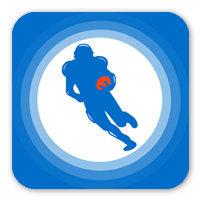



 RADIO
RADIO








